5 Stars
Wonderful service,thank you so much :)
PAYPAL, AFTERPAY available 🛍️










Couldn't load pickup availability
This beautiful phone stand dock has got a mandala design engraved on Mango wood in a whitewashed finish for rustic appeal. This finish highlights the hand-carved detail. It also features a charger port opening.
You can rest your phone on this, or leave it charging on the desk. The stand would look pretty whether you have a phone on this or not!
Dimensions
The Sanskrit word “Mandala“ is a compound deriving from manda, which means "essence," and the suffix la, meaning "container". This motif can be thought to represent the universe in balance and harmony just like the design in this motif pattern.
Features
Note
Due to the nature of hand-made products, kindly expect slight imperfections. This is not a defect and "Mandala Smart Phone Dock - Whitewashed" is non-refundable due to this reason.
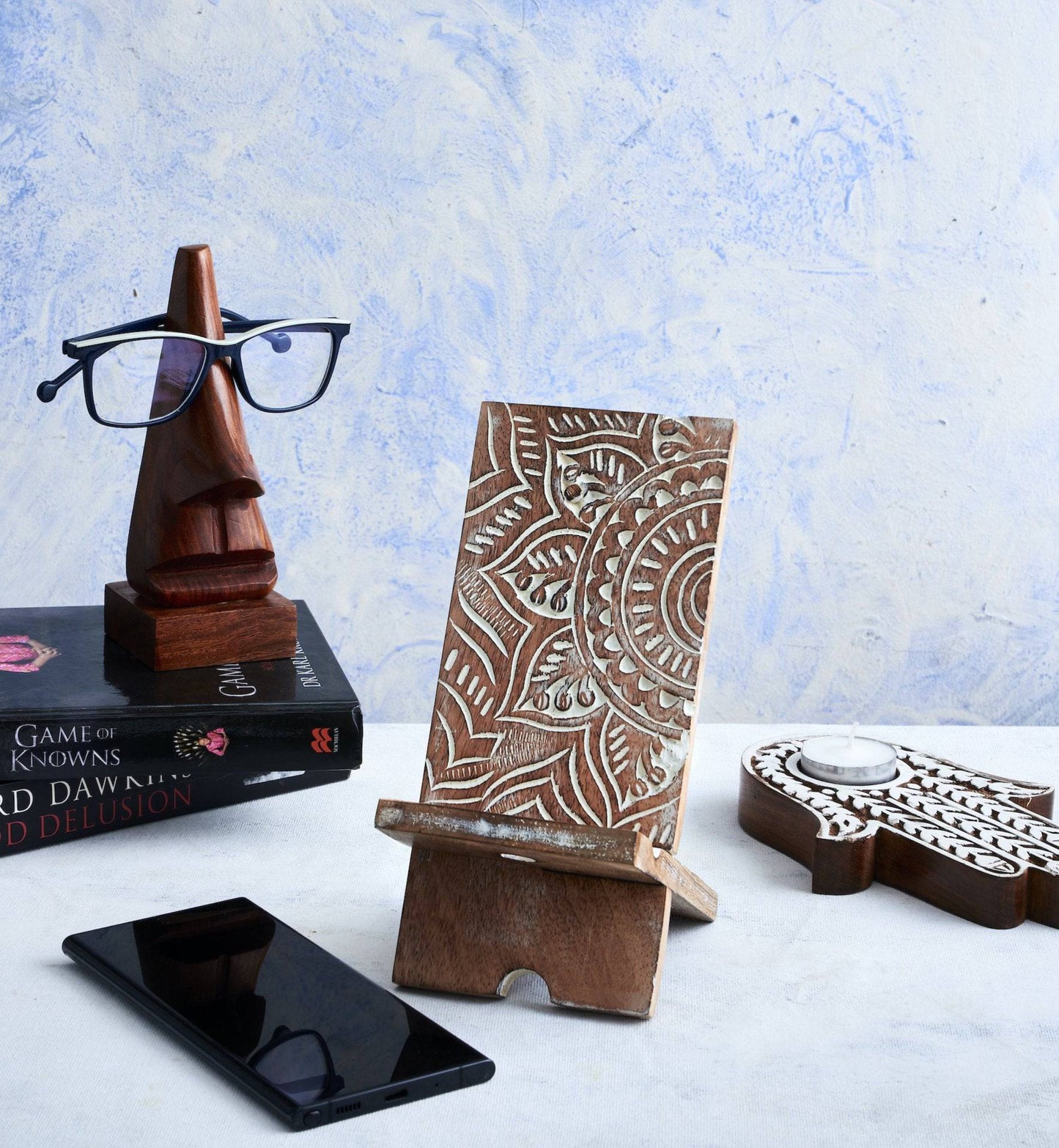
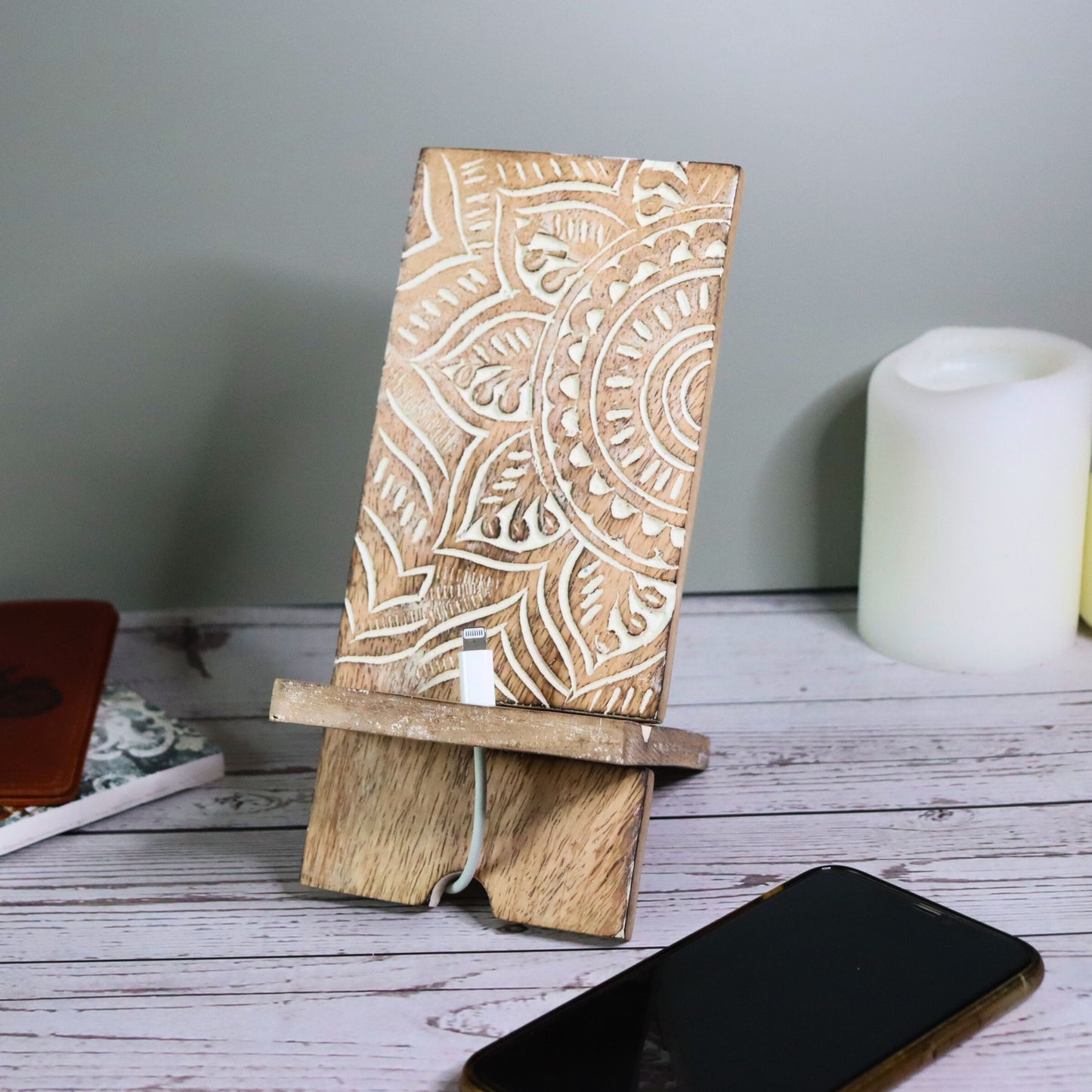
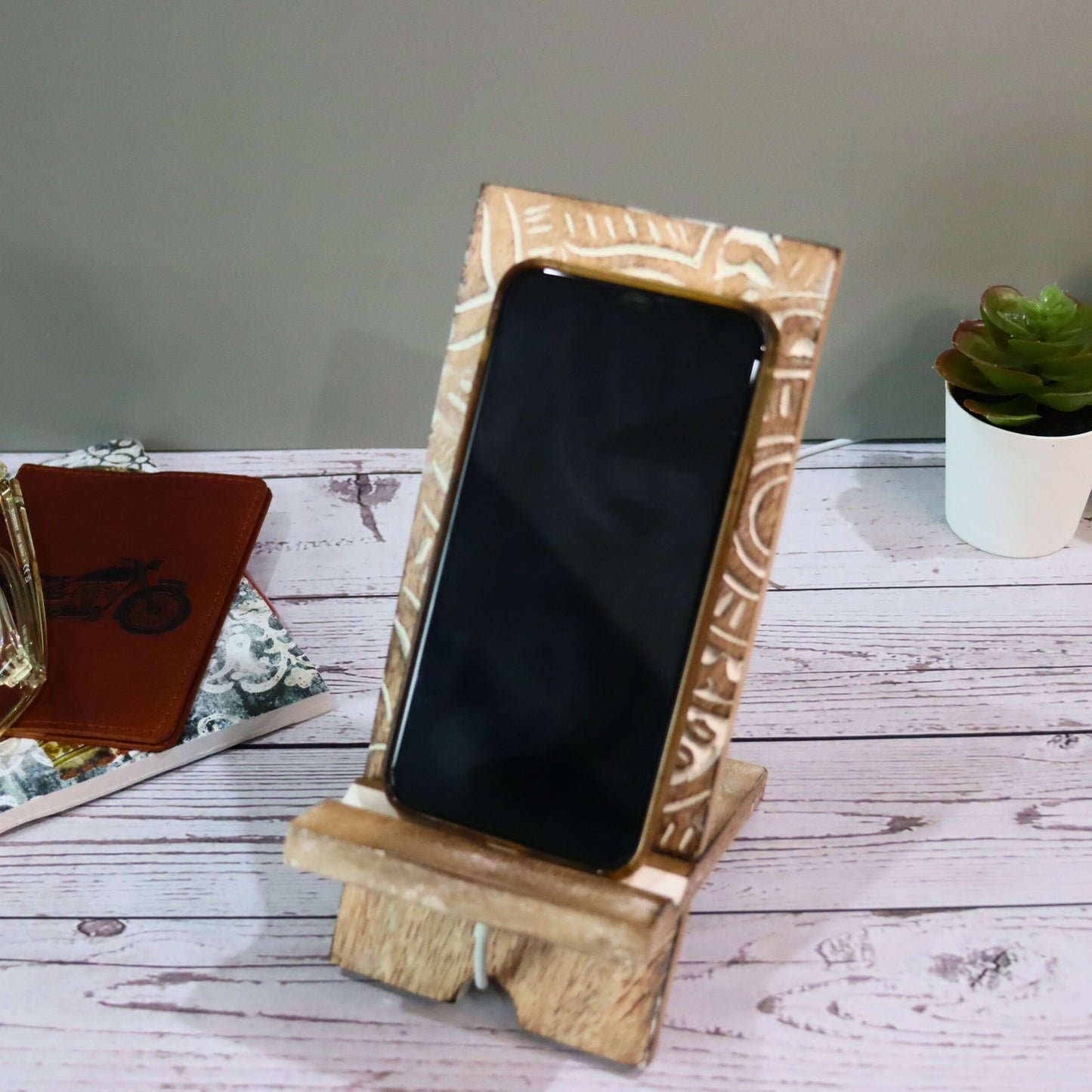
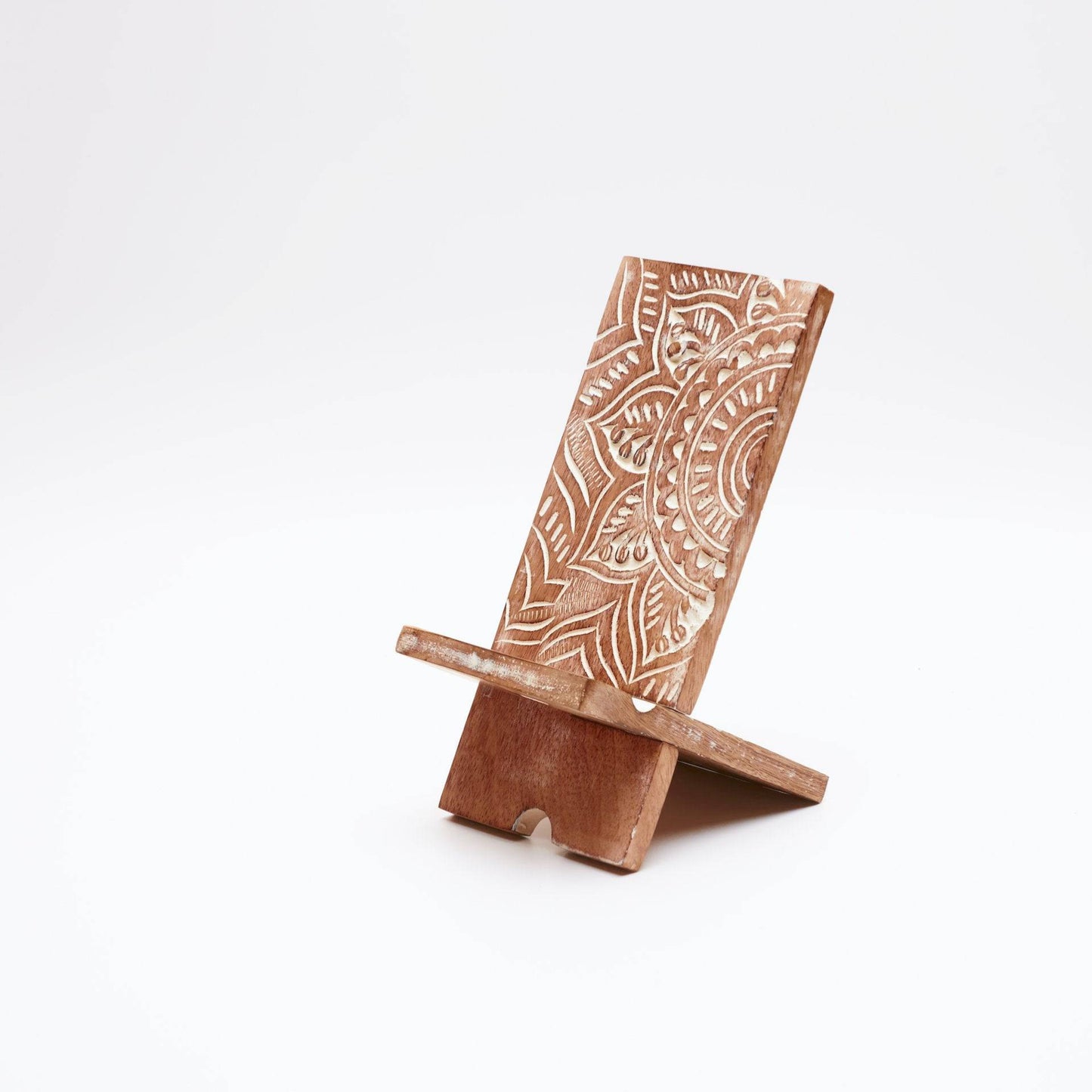
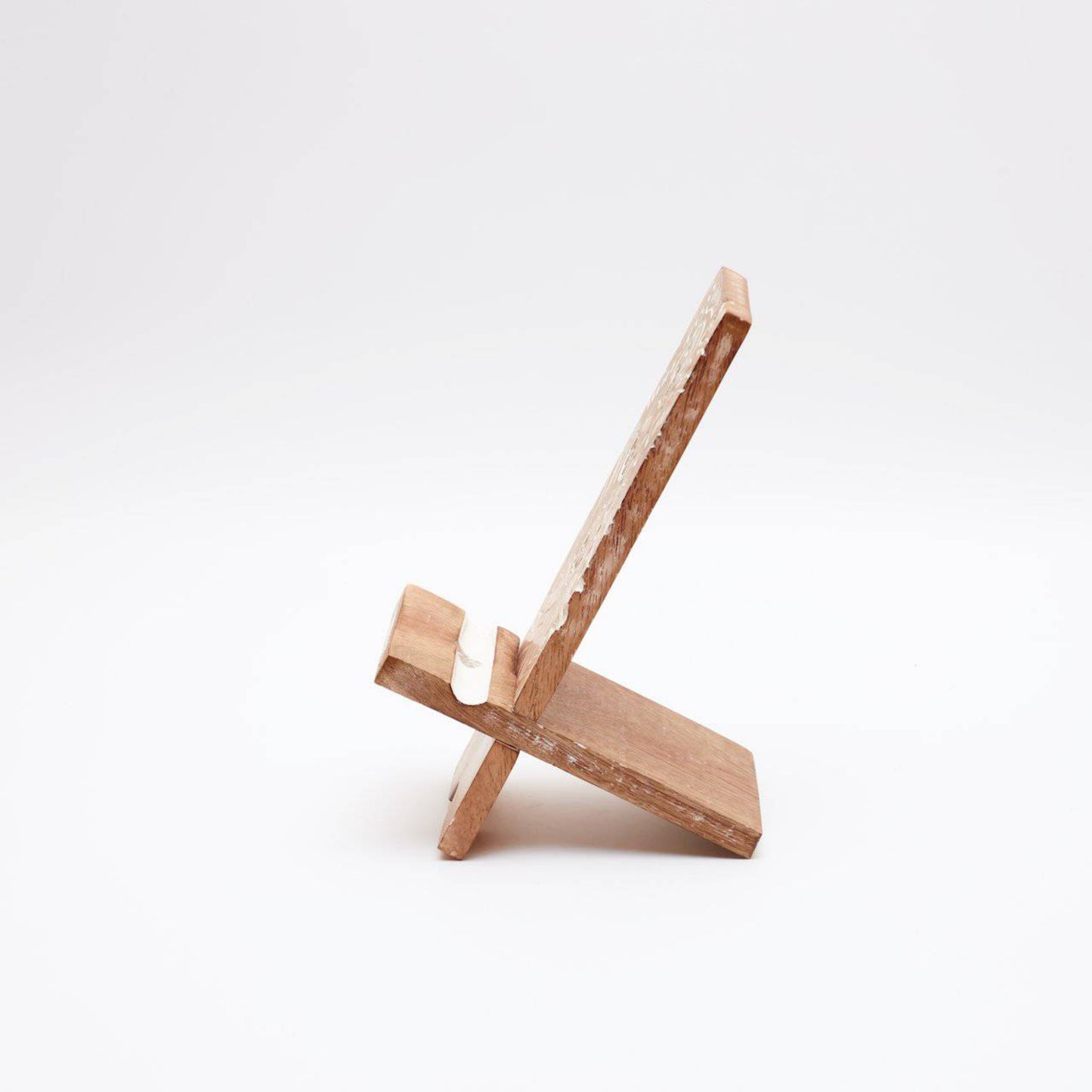
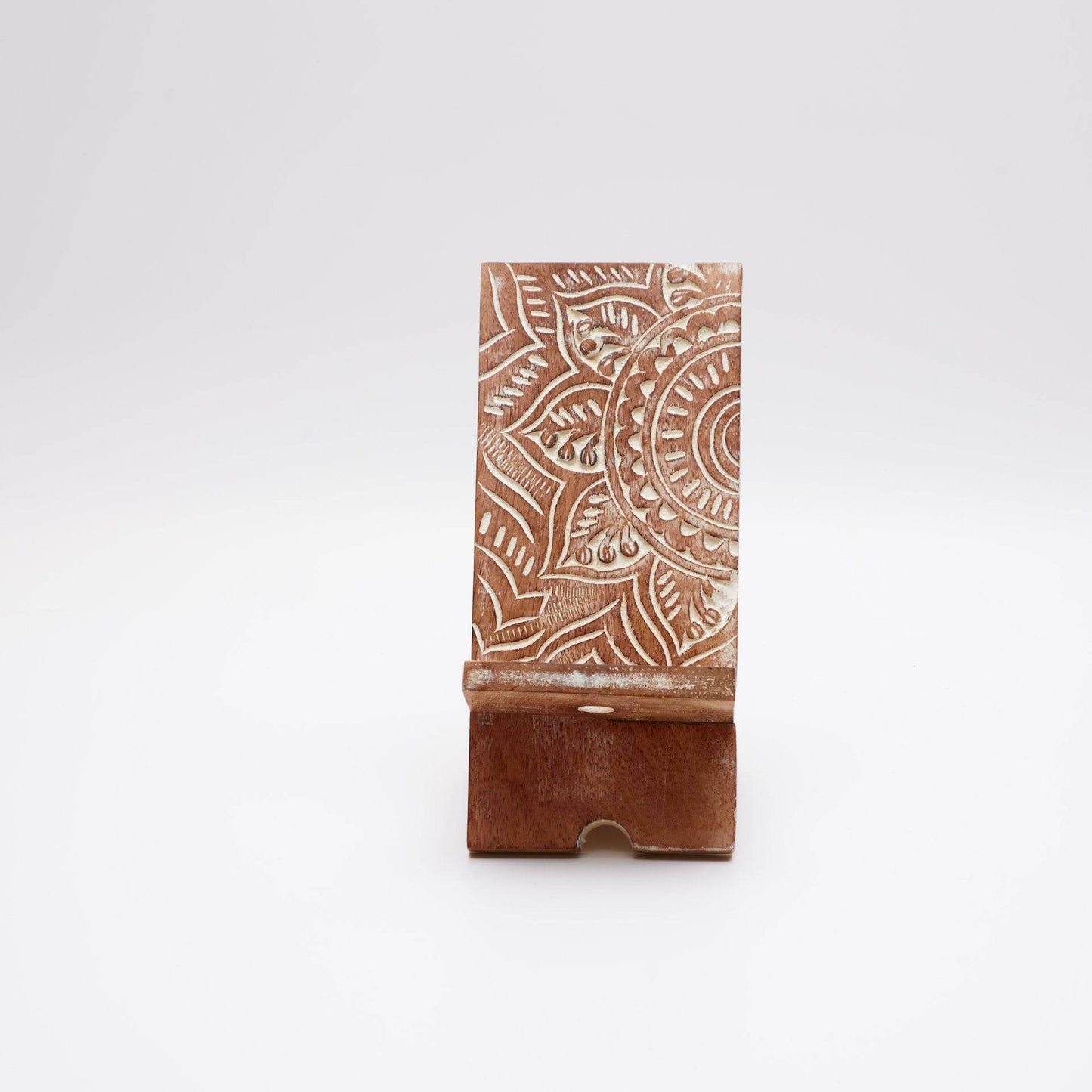
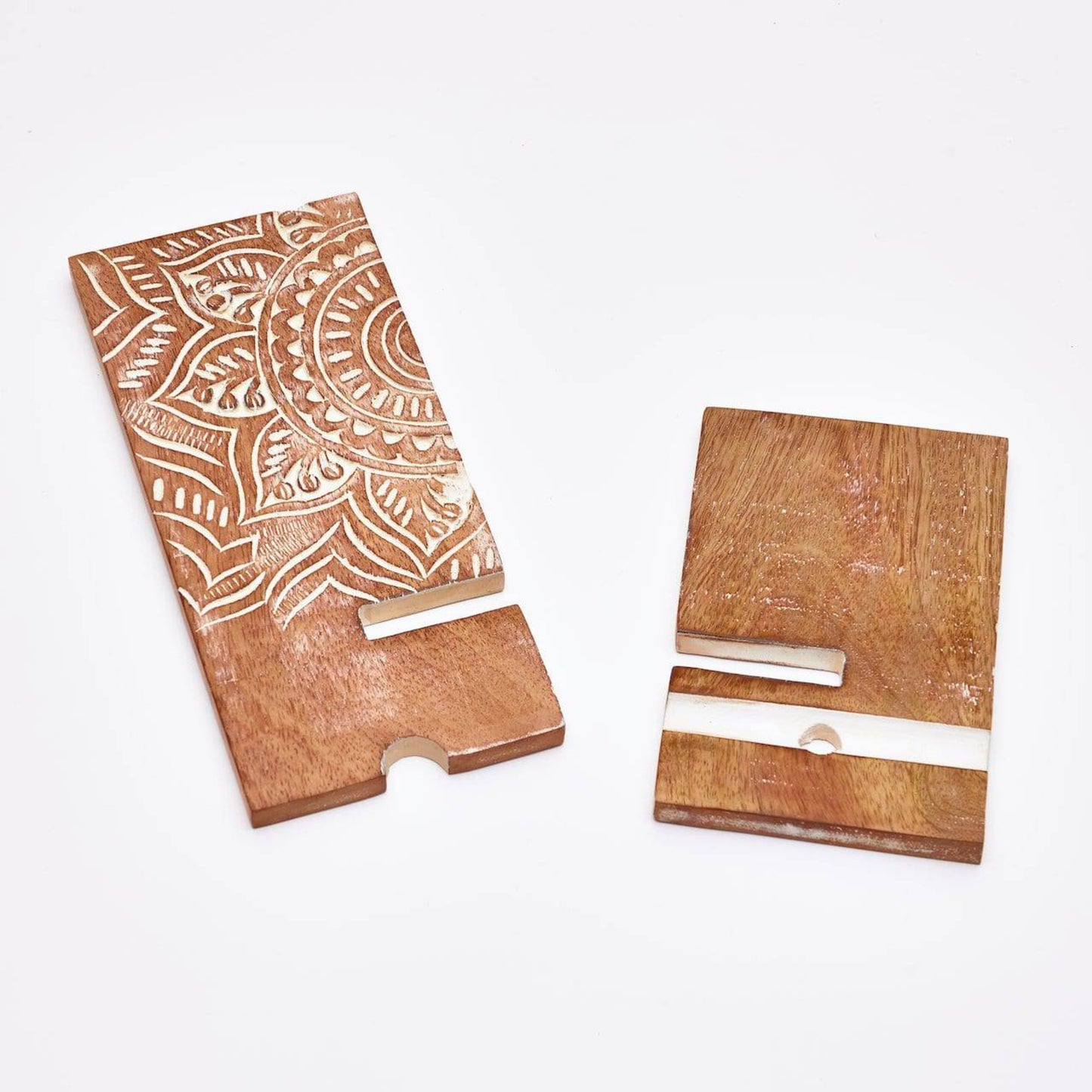
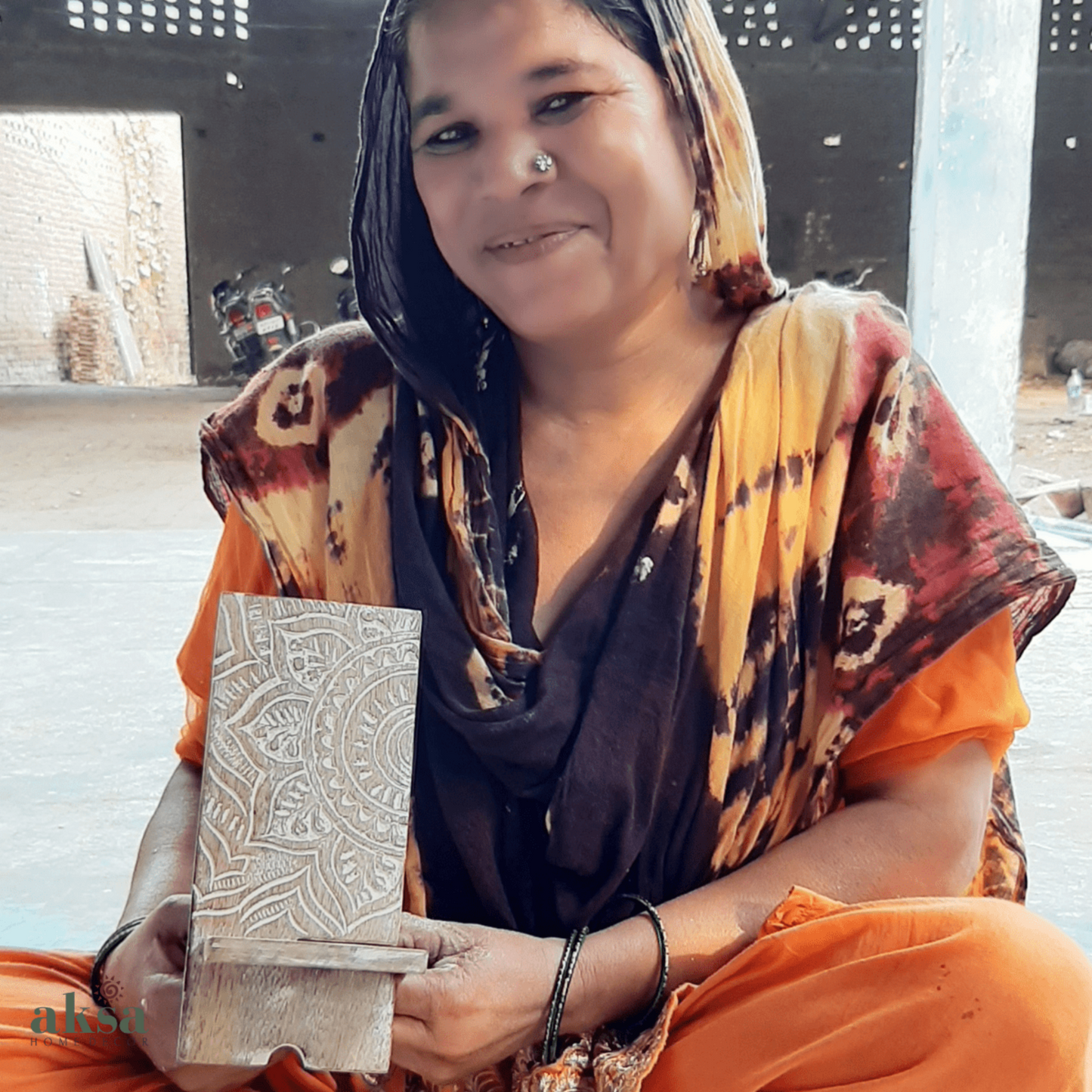
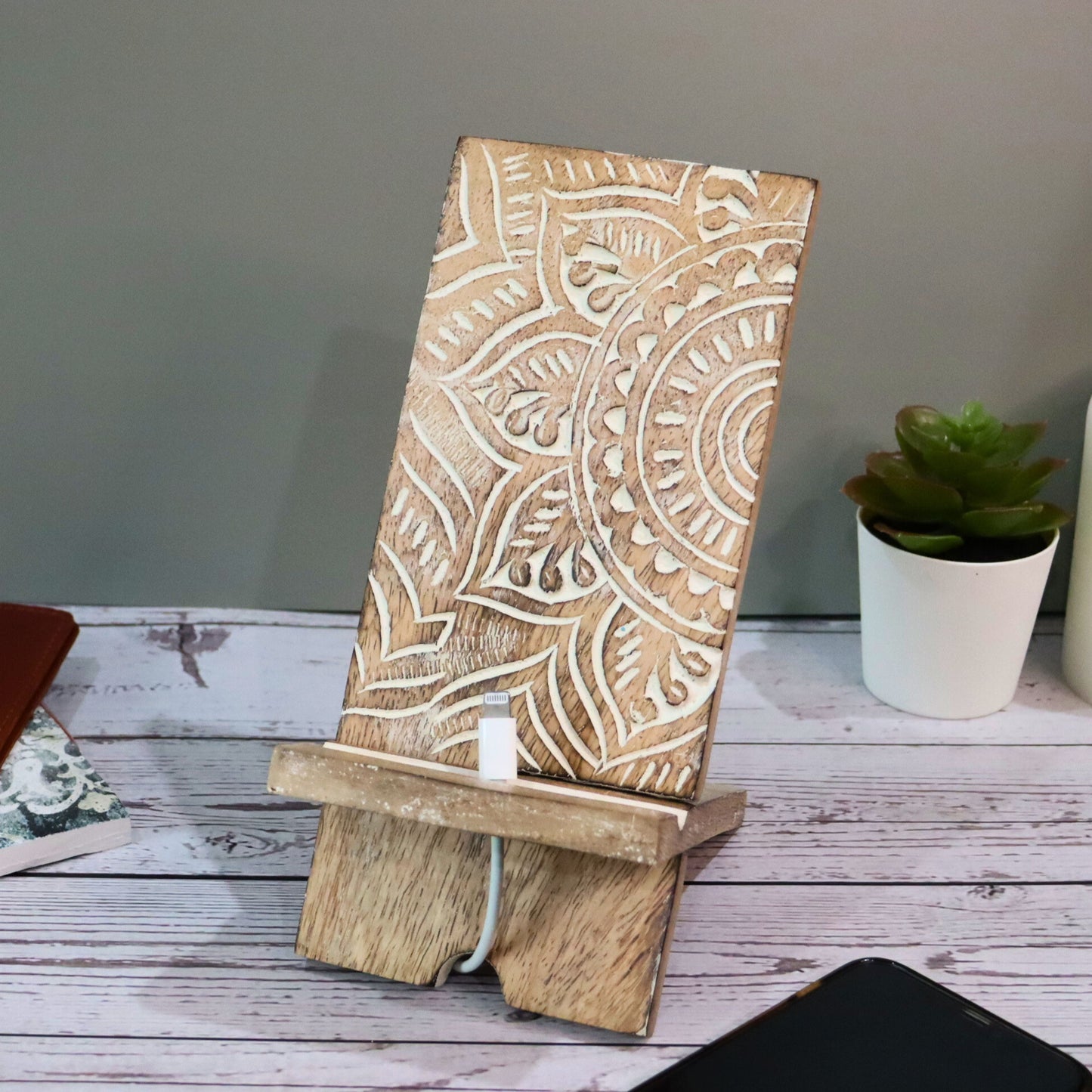
$10 Fixed standard shipping fee is waived off when the order value is $75 or above (AU) and $100 or above (NZ).
Choose your favourite service - AfterPay, Zip, Latitude Pay, Klarna
Wonderful service,thank you so much :)
Crafted with precision and imbued with natural elegance, our phone docks are a true work of art. Made from high-quality wood and other materials, these holders are a testament to fine craftsmanship. The intricate engraving showcases our commitment to detail and aesthetic excellence. Whether placed on a vanity table or gifted to a loved one, these beautiful boxes are sure to make a statement.
Our range of quality docks comes in different designs to provide a choice of selecting one that best suits your needs and purpose. With its timeless design and versatile functionality, the phone holder combines elegance with practicality.
Since centuries, wood has provided fire, shelter, tools, and supported so many inventions e.g. the wheel. Woodcraft in India is dated back to the ancient times of Maharajas. Initially, the art was limited to carving sculptures and windows of temples and palaces. Over many generations and under the influence of its region's culture and locally available wood the art form has evolved and now extends to articles like furniture, decorative pieces, storage boxes, table lamps, toys and puppets.
Wood can belong to either of the two categories - softwood or hardwood. Technically, softwood comes from the botanical group Gymnospermae and hardwood comes from the botanical group Angiospermae.
Most softwood are evergreen, have no flowers and develop their seeds in cones (coniferous). They are usually fast growing. This makes them the most widely used woods commercially. Indian Sandalwood is an excellent example of softwood. It has a fragrant resin, thus is highly sought after for making religious images.
Hardwood are usually slower growing than softwoods. They have dense wood lending itself to greater structural integrity than softwood (durability), and is less prone to insect damage. A few examples are walnut, mahogany, balsa, oak, chestnut, elm, teak and sycamore.
India has an abundance of native wood that lends well to the carving and inlay work. Some examples are Ebony, Rosewood, Sandalwood, Sheesham, and Sal.
The diversity of each region's style and carving technique reflects in the motifs, and patterns on each carved article. The geometrical and floral patterns are the most popular. When an object is carved from a single block, it is believed that the spiritual energy inherent in the tree remains more concentrated.
To produce a beautiful carving from a block of wood requires sharp tools, suitable timber, and planning. Once cut, the wood can not be reattached and thus the artisan has to be careful while shaping his pattern. Finest carding is possible on hardwood due to its ability to split less, and wide range of colours.
There are quite a few carving techniques, some of which are mentioned below.
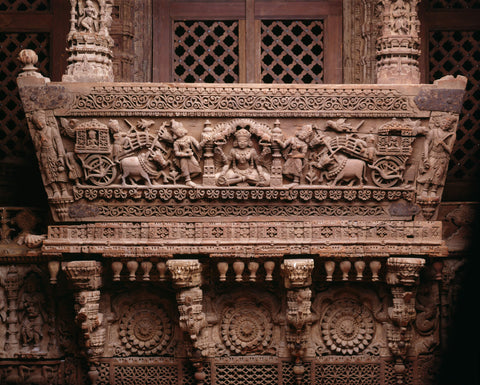
Pic: Relief carving used on an Architectural Ensemble from a Jain Meeting Hall

Pic: Nested dolls in a park setting
Once our artisan has craved the product, they can employ a range of decorating and finishing techniques to create the final product. Example of such decorations are paintwork, inlay (insetting shapes into cuts made in the wood), banding, and marquetry (pieces are glued to the surface of a piece of wood).

Pic: example of inlay set in Tic Tac Toe Game Set
In many regions, woodcraft production is vital for community livelihoods. By participating with Fair Trade organisations, we contribute to alleviating poverty and promoting sustainability through ethical practices. These organisations aim to educate and empower disadvantaged sections of the Indian community by providing them with job opportunities, gender equality, fair wages, safe and healthy working environment while preserving the local culture & traditional skills.
Wood - the world of woodwork and carving
Subscribe to our emails to get exclusive deals, stories and more. Enjoy 10% discount on your 1st purchase.
